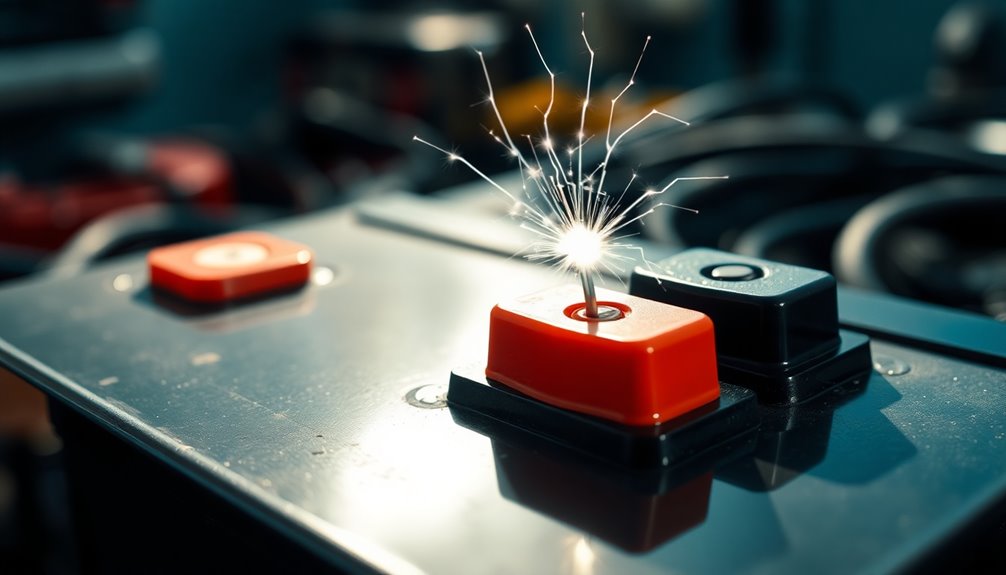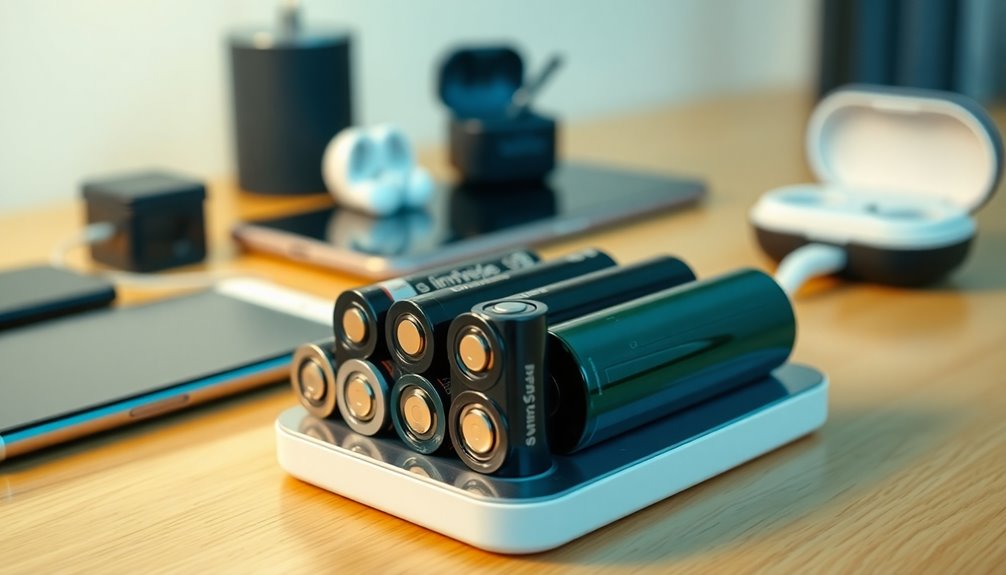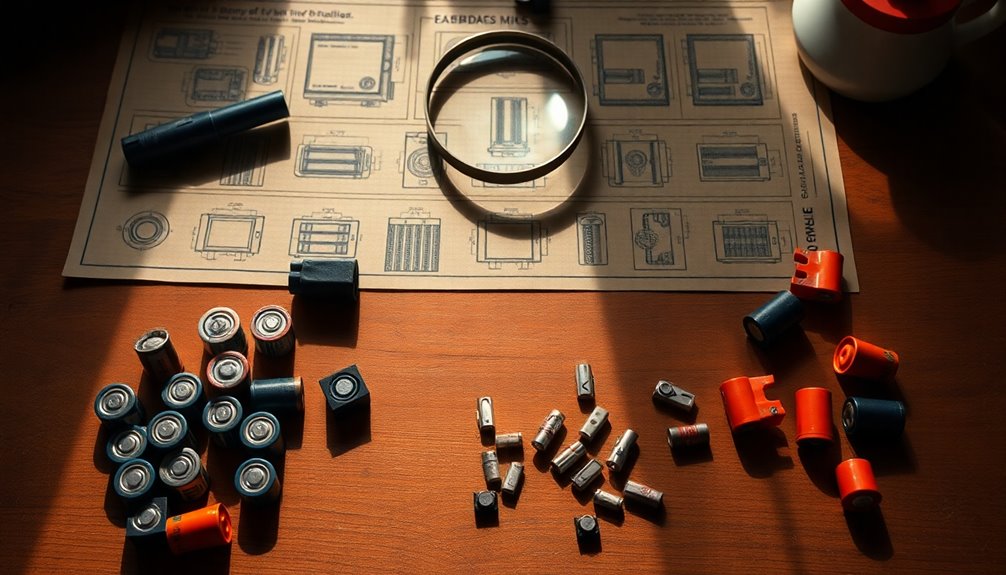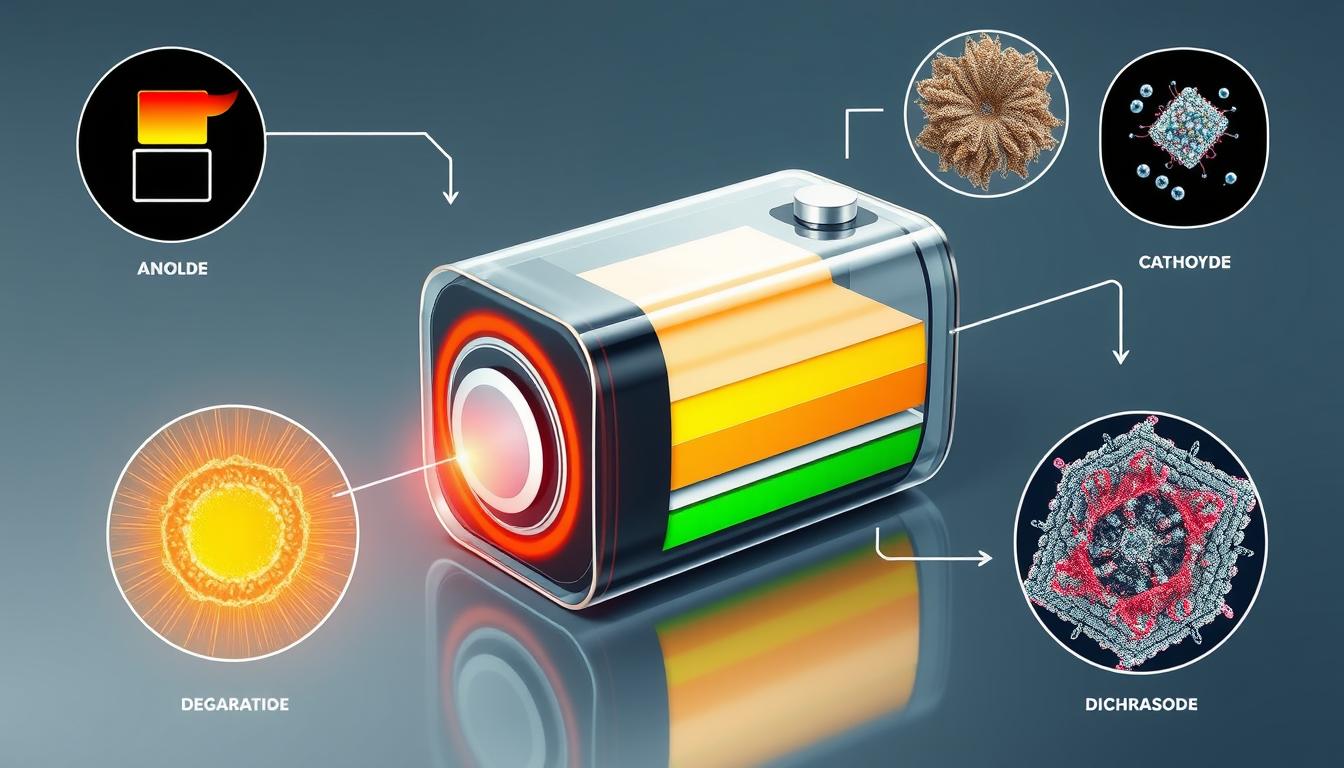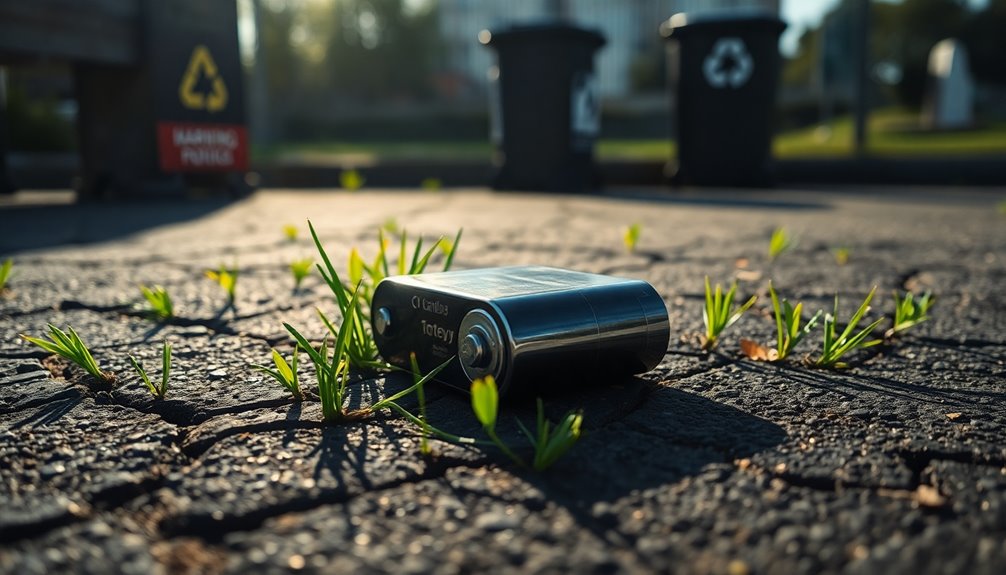Car batteries provide DC power, which is essential for starting your car and running its electrical systems. Each car battery consists of six cells that generate a total of about 12.6 volts through chemical reactions. While the engine runs, the alternator produces AC power, but it gets converted to DC for storage in the battery. This reliable supply of DC guarantees your vehicle functions smoothly. If you're curious about the different types of car batteries and how they affect performance, you'll find some interesting insights and tips that can enhance your understanding of vehicle power systems.
Key Takeaways
- Car batteries produce DC (Direct Current) power through chemical reactions in lead-acid cells, crucial for starting engines and powering electronics.
- Each car battery consists of six cells in series, generating a total output voltage of approximately 12.6 volts when fully charged.
- The alternator generates AC (Alternating Current) power while the engine runs, which is then rectified to charge the battery as DC.
- Lead-acid batteries, commonly used in cars, typically have a lifespan of 2 to 4 years and are reliant on chemical reactions.
- Lithium-ion batteries, with higher efficiency and longer lifespan, are increasingly preferred for vehicles due to their eco-friendliness and performance.
Understanding AC and DC Power
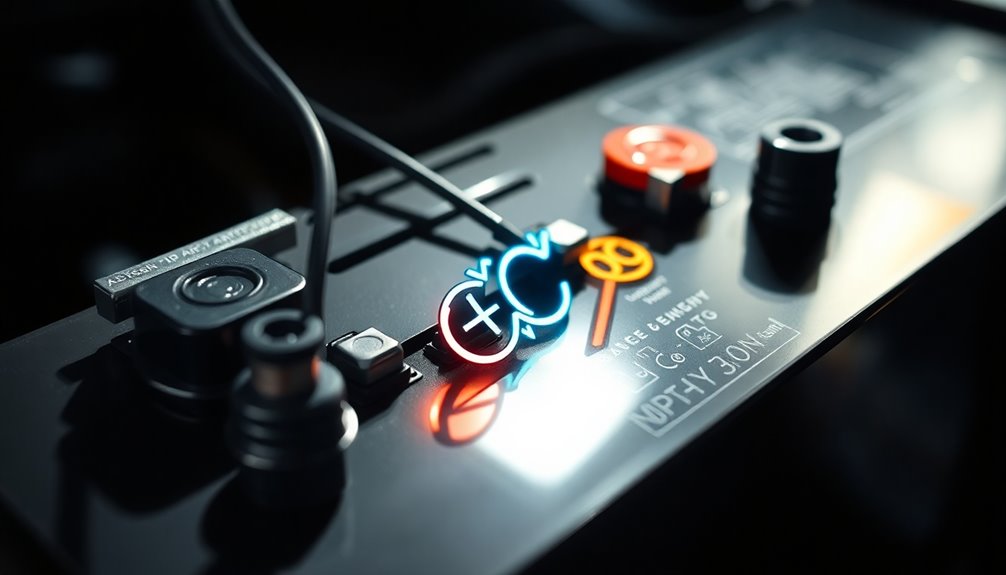
When you think about electricity, it's important to grasp the difference between AC and DC power.
AC, or Alternating Current, periodically reverses direction, making it ideal for long-distance power transmission. It easily transforms voltage levels, ensuring efficient energy flow.
On the flip side, DC, or Direct Current, maintains a constant flow of current and is primarily used in battery-powered devices. In vehicles, the car battery supplies DC power, necessary for starting engines and running electrical systems.
The alternator converts mechanical energy to AC, which is then rectified to DC for battery storage. Understanding these differences is significant for managing your vehicle's electrical systems effectively, as each type of current serves unique functions in ensuring reliable power for your car. Additionally, knowing about energy efficiency can help you optimize your vehicle's performance.
Car Battery Functionality and Components
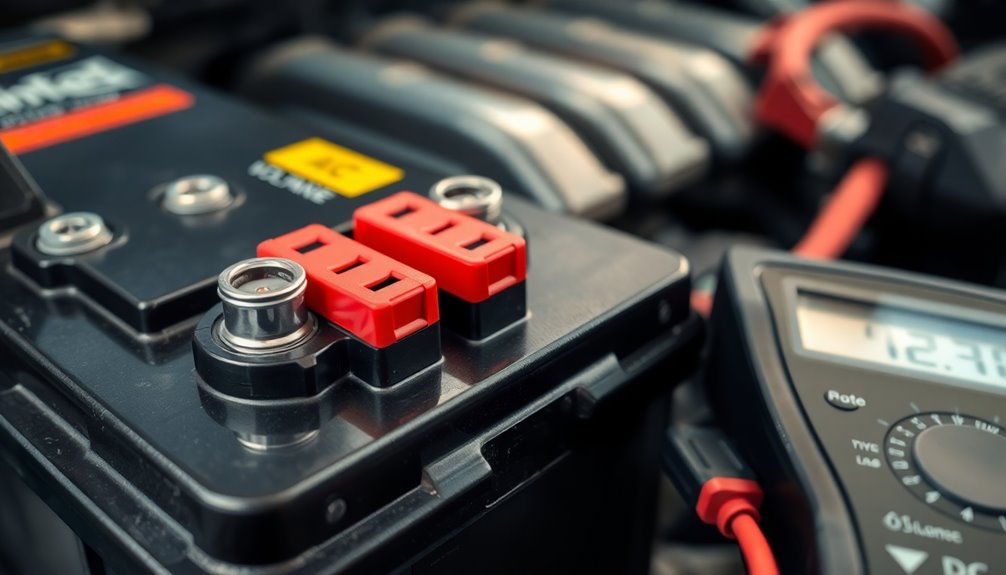
Understanding how car batteries work is essential for maintaining your vehicle's performance. Your car battery primarily produces Direct Current (DC) power through a chemical reaction in lead-acid cells.
Here's a quick breakdown of its functionality:
- Components: It consists of six cells connected in series, each generating about 2.1 volts.
- Voltage: When fully charged, the combined output is approximately 12.6 volts.
- Chemical Reaction: Lead dioxide and sponge lead plates interact in a sulfuric acid electrolyte to create power.
- Powering: It provides the initial surge of DC power to start the engine and supports electronic components like lights and ignition systems.
The Role of the Alternator
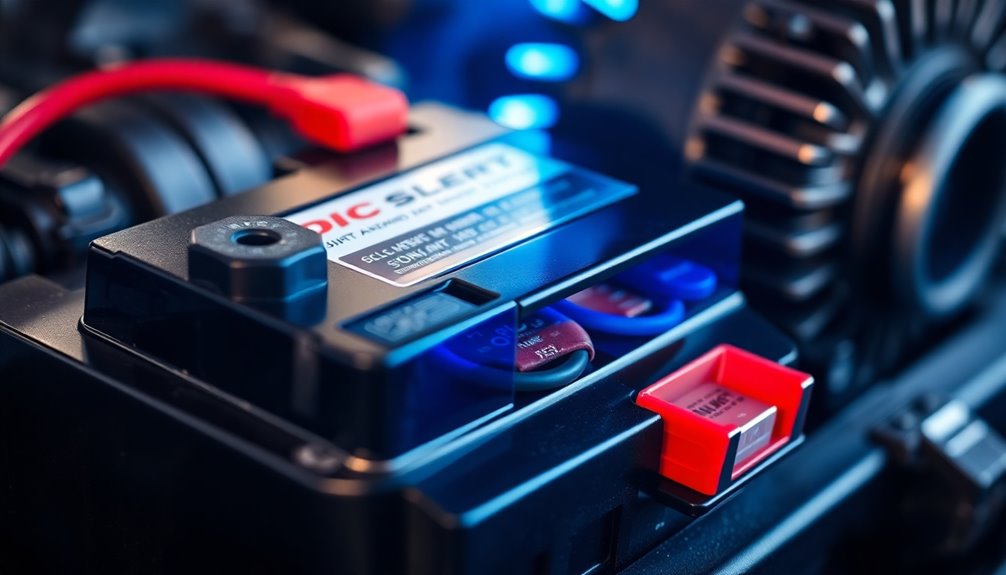
The alternator acts as the heart of your vehicle's electrical system, converting mechanical energy from the engine into electricity.
While the engine runs, the alternator generates AC (Alternating Current) power, which is then transformed into DC (Direct Current) through a rectifier for your car's electrical systems.
This process guarantees your battery stays charged, with the output voltage typically ranging from 13.5 to 14.5 volts, preventing overloads.
The alternator plays a vital role in maintaining the battery's charge and meeting the power demands of various electrical components in your vehicle.
To keep everything functioning smoothly, regular maintenance of the alternator is essential, as it can prevent undercharging or overcharging that might harm your battery's longevity and performance.
Comparing Battery Types
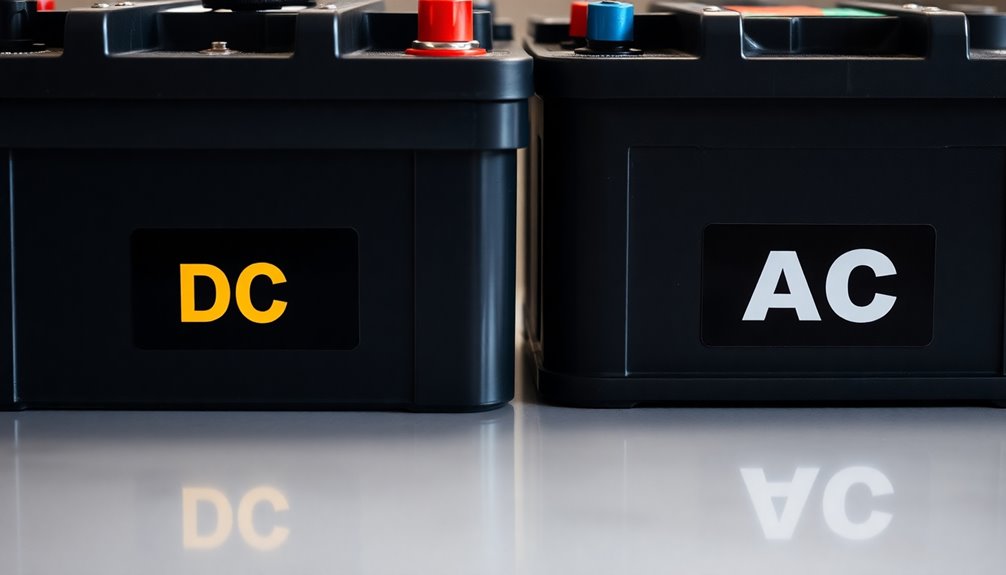
With the alternator keeping your battery charged and your vehicle's electrical systems running, it's important to know what type of battery is best for your needs.
Here's a quick comparison:
- Lead-Acid Batteries: Most common, lasting 2 to 4 years, rely on chemical reactions for DC power.
- Lithium-Ion Batteries: Offer a lifespan of 5 to 10 years, with a charging efficiency of up to 99%, making them cost-effective in the long run.
- AGM Batteries: A type of lead-acid battery, they provide better performance and longer life than traditional flooded options.
- Environmental Impact: Lithium-ion batteries generally have a lower environmental impact due to better recycling potential and fewer hazardous materials.
Choose wisely to optimize your car's performance!
Environmental Impact and Performance
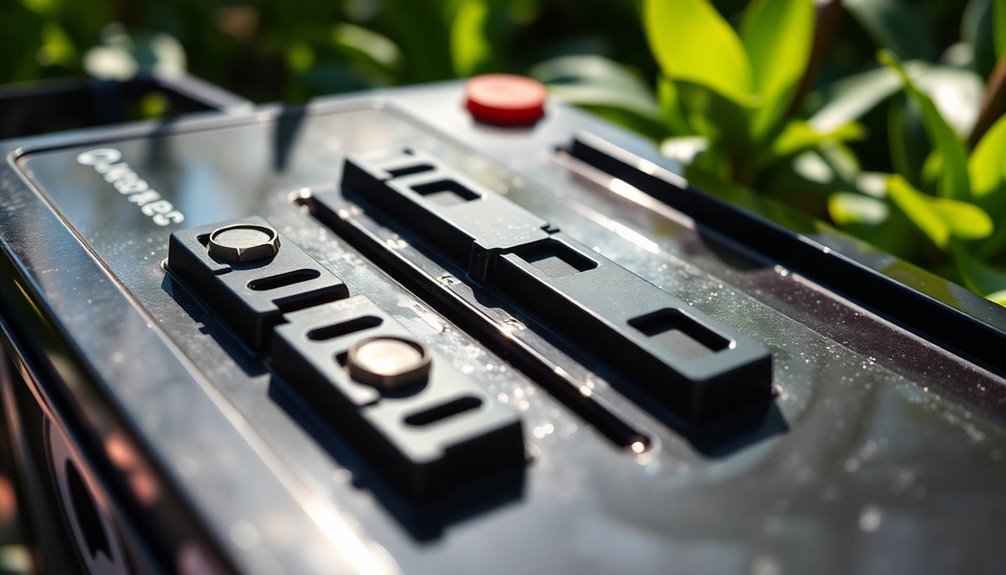
While both lithium-ion and lead-acid batteries serve essential roles in powering vehicles, their environmental impact and performance differ markedly.
Lithium batteries are generally more eco-friendly due to their higher recycling potential and lower hazardous waste. In cold weather, lead-acid batteries struggle as chemical reactions slow, leading to difficulty starting vehicles, while lithium batteries maintain charge and deliver stable voltage output.
The higher energy density of lithium batteries extends electric vehicle ranges and reduces the frequency of battery replacements, further minimizing environmental impact over time. Additionally, the increased focus on sustainable practices in battery production aligns with the broader trend of environmental consciousness affecting various industries.
However, proper recycling for both types is vital. Lead-acid batteries are recyclable but contain hazardous materials, so careful handling is necessary to mitigate their environmental impact.
Frequently Asked Questions
Do Car Batteries Put Out AC or DC?
Car batteries put out DC (Direct Current) power. This means the electrical flow moves in one direction, which is perfect for your vehicle's needs.
When you start the engine, the battery supplies about 12 volts of DC, powering essential components like lights and the ignition system.
If you tried to use AC (Alternating Current) directly, it wouldn't work properly and could even damage your car's electrical systems.
Stick with DC for your vehicle!
Will I Get Shocked Disconnecting My Car Battery?
As you lean over the engine, the metallic scent of the car mingles with a hint of grease.
You wonder, will you get shocked disconnecting your car battery? While it's unlikely, it can still startle you.
Start with the negative terminal to minimize risks and keep safety gloves and goggles handy.
A fully charged battery packs 12.6 volts, which isn't lethal, but that jolt can surprise you if you're not careful!
Should I Use AC or DC on a Multimeter for Car Battery?
When you're testing a car battery with a multimeter, you should definitely use the DC setting.
Car batteries produce direct current, typically around 12 volts. Confirm your multimeter is set to a range that can read at least 12 volts DC to get accurate measurements.
Avoid using the AC setting, as it can lead to incorrect readings and might damage your multimeter.
Properly connect the probes to guarantee accurate voltage readings.
Is Automotive Electrical AC or DC?
Did you know that around 90% of vehicles operate on a 12-volt DC system?
When it comes to automotive electrical systems, they primarily use DC power. This power is essential for components like ignition systems and lights.
While the alternator generates AC when the engine runs, it's converted back to DC to recharge the battery.
Conclusion
In the world of cars, your battery is like a steadfast lighthouse, guiding the way with direct current (DC) power. Unlike alternating current (AC), which flows and changes direction, your car battery delivers a consistent charge to start the engine and power electronics. Understanding this difference helps you appreciate the essential role your battery plays. So, next time you hop in your car, remember it's the unwavering DC that keeps your ride running smoothly!

